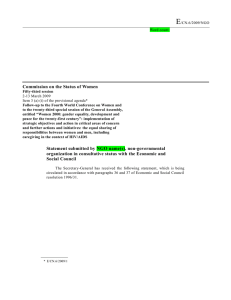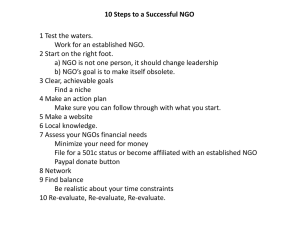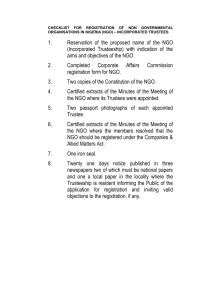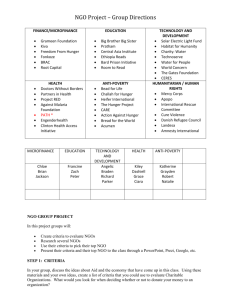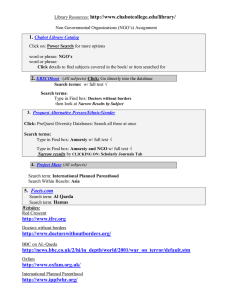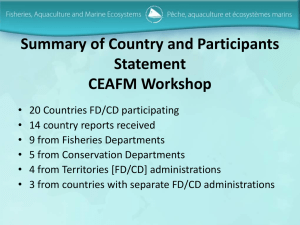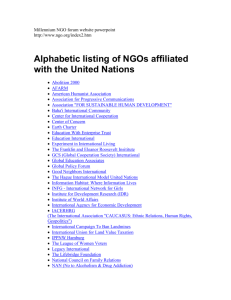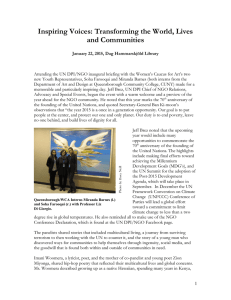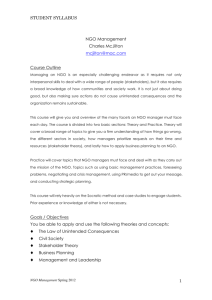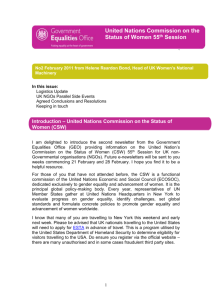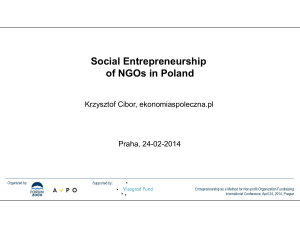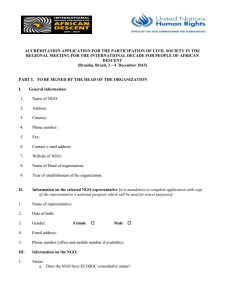Legal & Administrative Oversight of NGOs
advertisement
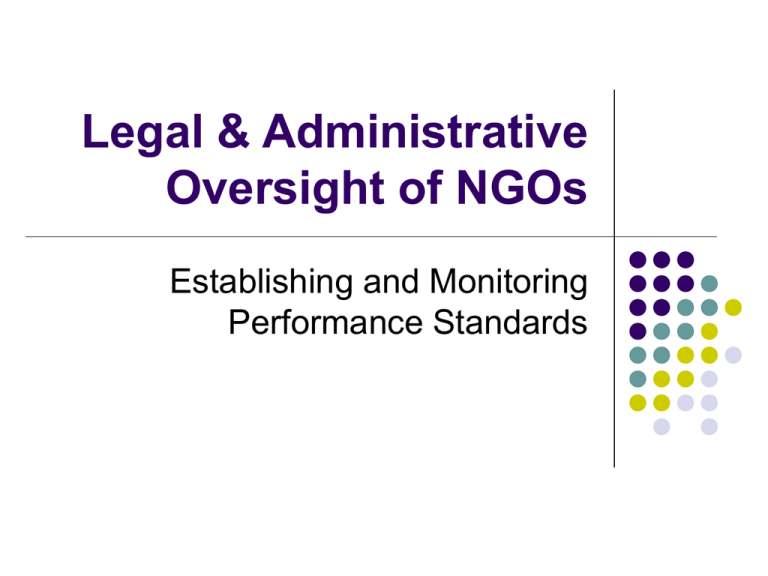
Legal & Administrative Oversight of NGOs Establishing and Monitoring Performance Standards Martin B. Tracy, Ph.D. Social Insurance Research International 1519 Canterbury Drive Murray, Kentucky 42071-3250 mbtracy@murray-ky.net Contract Spell out what is expected and how and when monitoring and evaluation will occur. Specificity in the contract ensures that expectations are understood and agreed upon by all parties and allows government to hold the NGO accountable for meeting agreed upon requirements. Contract Continues Specify performance standards that the NGO must meet and how and when monitoring will take place. Specific standards should be determined jointly between the members of the partnership and appropriate community stakeholders. Two Categories of Standards 1. Organizational. 2. Service or program performance standards. Organizational Standards Day-to-day operations. NGO’s organizational chart. Operating plan of who will be served and how. Strategic plan including vision and mission statement, goals, and objectives. Operational Standards Continued Financial record keeping. Human resource management information systems including credentials and licensing of staff, training and supervision. Risk management procedures; compliance with health and safety standards; policies and procedures. Relationship to the community. Quality improvement processes. Service/Program Standards Service or program performance standards include financial and performance indicators that provide information about program performance. These measures should be directly related to the NGO’s mission and display evidence that the program is meeting desired results. Service/Program Standards Continued Systematic means of collecting, analyzing and reporting data on performance indicators. Management Information Systems (MIS) enable the NGO to track information on several different kinds of measures including inputs, outputs and outcomes. Data Gathering Customer satisfaction surveys, needs assessments, and standardized assessment instruments may be used to gather outcome information. Monitoring Process: Site Visits Credentialing: ensuring staff meets legal and contractual standards for training, education and licensure. Chart Audits: review random samples of records to ensure compliance with recordkeeping requirements. Visual inspection of facilities for compliance for appropriateness and check of compliance with all health and safety codes. Site Visits Continued Direct observation of services. Interviews with administrators, staff and consumer groups. Review of financial and human resource records and policy and procedures manuals. Feedback Process: CAPS Corrective Action Plans (CAPs) address performance areas that are not adequately met. CAPs identify the problem area. How the NGO plans to address the deficit. Sets timeframes for completion of these activities. Advisory Boards Representative of the community. Adds diversity. Community and business leaders. Government officials. Social service agency representatives. Consumers. Trade union representatives. Role of Government Ensure accountability for public funds. Ensure compliance with legal requirements. Ensure needed services are provided. Ensure effectiveness of services. Engage in dialogue with NGO and stakeholders, including consumer groups, to examine needs and evaluate results. Role of NGO Meet the requirements of the contract. Collect, report, analyze and utilize legal, financial and performance information in the implementation of programs. Engage in dialogue with local government and stakeholders, including consumer groups, to examine needs and evaluate results. Role of Advisory Board Advise NGOs regarding organizations operations and assist in decision-making. Review financial information to ensure accountability. Representative of community/stakeholders. Diverse membership to represent diverse needs of community. Role of Consumer Groups Involvement in planning and evaluation. Customer satisfaction surveys. Needs assessment surveys. Focus group participation. Hold organizations and local government accountable. Role of Public/Community Information shared with the community in a format which is easily accessible and understandable. Community forums. Annual Reports. Needs Assessments. Satisfaction Surveys. Community’s impact on success/failure of programs must be taken into consideration.
